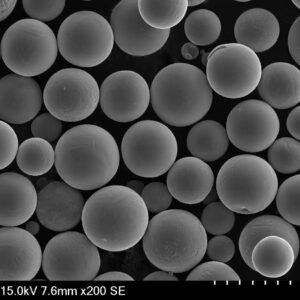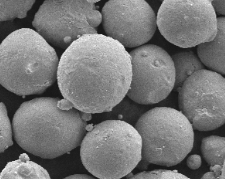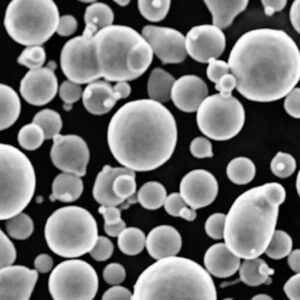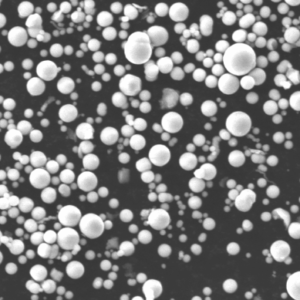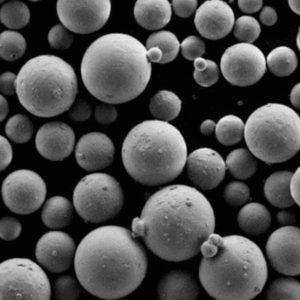Überblick über Pulver für Großformatiger Druck
Der Großformatdruck ist ein Meilenstein in der Welt des industriellen Drucks und ermöglicht die Erstellung hochwertiger Bilder, Texte und Designs in großem Maßstab. Aber wussten Sie, dass das im Großformatdruck verwendete Pulver eine entscheidende Rolle für die Qualität, Haltbarkeit und Effizienz des Endprodukts spielt? Dieser Leitfaden befasst sich mit den Besonderheiten von Pulvern für den Großformatdruck, angefangen bei den verfügbaren Pulvertypen, ihrer Zusammensetzung und ihren Eigenschaften bis hin zu ihren Anwendungen, Vorteilen und Grenzen.
Ganz gleich, ob Sie Ingenieur, Drucker oder einfach nur neugierig auf die Feinheiten des Großformatdrucks sind, dieser Artikel bietet Ihnen alle Informationen, die Sie brauchen, um zu verstehen, wie das richtige Pulver den Unterschied bei Ihren Druckprojekten ausmachen kann.
Pulvertypen für Großformatiger Druck
Je nach gewünschtem Ergebnis werden im Großformatdruck verschiedene Arten von Puder verwendet. Sehen wir uns die am häufigsten verwendeten Puder und ihre Eigenschaften an.
| Pulver Typ | Zusammensetzung | Eigenschaften | Anwendungen | Vorteile | Beschränkungen |
|---|---|---|---|---|---|
| Aluminium-Pulver | Aluminiumpartikel | Leicht, langlebig | Komponenten für die Luft- und Raumfahrt, Automobilteile | Hohes Verhältnis von Festigkeit zu Gewicht | Kann oxidieren, wenn nicht ordnungsgemäß beschichtet |
| Kupfer-Pulver | Kupferpartikel | Leitfähig, korrosionsbeständig | Elektrische Komponenten, Wärmetauscher | Ausgezeichnete Wärmeleitfähigkeit | Teuer im Vergleich zu anderen Metallen |
| Edelstahl-Pulver | Eisen, Chrom, Nickel | Korrosionsbeständig, stark | Medizinische Geräte, Ausrüstung für die Lebensmittelverarbeitung | Äußerst langlebig und rostbeständig | Schwer, kann kostspielig sein |
| Titan-Pulver | Titan-Partikel | Hohe Festigkeit, geringes Gewicht | Medizinische Implantate, Teile für die Luft- und Raumfahrt | Biokompatibel, stark, leicht | Hohe Kosten für Rohmaterial |
| Nickel-Pulver | Nickelpartikel | Stark, korrosionsbeständig | Turbinenschaufeln, Batterien | Ausgezeichnete mechanische Eigenschaften | Kann schwierig zu verarbeiten sein |
| Zink-Pulver | Zinkpartikel | Niedriger Schmelzpunkt, langlebig | Verzinkung, Batterien | Wirksamer Korrosionsschutz | Begrenzte mechanische Festigkeit |
| Eisenpulver | Eisenpartikel | Starke, magnetische Eigenschaften | Automobilteile, Maschinenteile | Kostengünstig, leicht verfügbar | Unbehandelt rostet er leicht |
| Bronze-Pulver | Kupfer, Zinn | Langlebig, korrosionsbeständig | Skulpturen, Dekorationsartikel | Ästhetischer Reiz, stark | Höhere Kosten aufgrund des Kupfergehalts |
| Kobalt-Chrom-Pulver | Kobalt, Chrom | Abriebfest, biokompatibel | Zahnimplantate, Turbinenmotoren | Hervorragend geeignet für stark beanspruchte Anwendungen | Teuer, schwierig zu verarbeiten |
| Magnesium-Pulver | Magnesium-Teilchen | Leicht, stark | Automobil-, Luft- und Raumfahrtanwendungen | Hohes Verhältnis von Festigkeit zu Gewicht | Entzündlich in Pulverform |
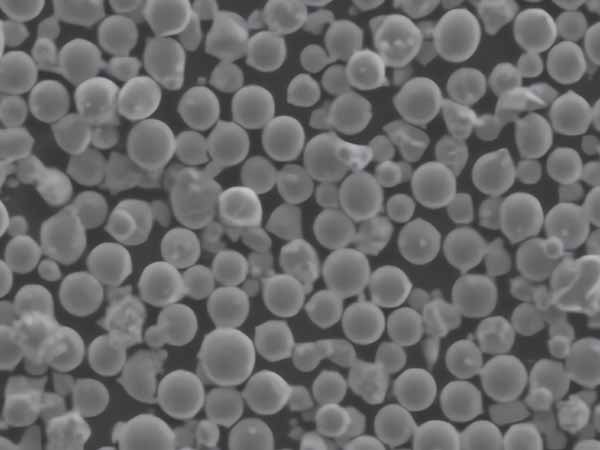
Zusammensetzung des Pulvers für den Großformatdruck
Die Zusammensetzung des im Großformatdruck verwendeten Pulvers bestimmt seine Eignung für verschiedene Anwendungen. Jeder Pulvertyp besteht aus einem Grundmetall oder einer Legierung, die je nach den erforderlichen mechanischen, thermischen und elektrischen Eigenschaften ausgewählt wird.
| Pulver Typ | Primäres Element | Legierungselemente | Zusammensetzung Details |
|---|---|---|---|
| Aluminium-Pulver | Aluminium | Silizium, Kupfer, Magnesium | Häufig legiert, um die Festigkeit, Leitfähigkeit oder Korrosionsbeständigkeit zu erhöhen |
| Kupfer-Pulver | Kupfer | Zink, Zinn | Messing (Kupfer-Zink), Bronze (Kupfer-Zinn) für verschiedene mechanische Eigenschaften |
| Edelstahl-Pulver | Eisen | Chrom, Nickel, Molybdän | Die spezifischen Qualitäten variieren je nach Anwendung, wie z. B. 304, 316, usw. |
| Titan-Pulver | Titan | Aluminium, Vanadium | Übliche Legierung ist Ti-6Al-4V, bekannt für hohe Festigkeit und geringes Gewicht |
| Nickel-Pulver | Nickel | Chrom, Molybdän | Häufig verwendet in Hochleistungslegierungen wie Inconel |
| Zink-Pulver | Zink | Aluminium, Kupfer | Kann geringfügige Legierungselemente zur Verbesserung der Eigenschaften für die Galvanisierung enthalten |
| Eisenpulver | Eisen | Kohlenstoff, Mangan | Kohlenstoffarme und kohlenstoffreiche Sorten verfügbar, manchmal legiert |
| Bronze-Pulver | Kupfer | Zinn | Der Zinnanteil beeinflusst Härte und Verschleißfestigkeit |
| Kobalt-Chrom-Pulver | Kobalt | Chrom, Wolfram | Kobalt-Chrom-Wolfram-Legierungen sind hoch verschleißfest und biokompatibel |
| Magnesium-Pulver | Magnesium | Aluminium, Zink | AZ31B ist eine gängige Legierung, die wegen ihrer Kombination aus Festigkeit und Verformbarkeit verwendet wird. |
Merkmale des Pulvers für den Großformatdruck
Die Kenntnis der Eigenschaften des im Großformatdruck verwendeten Pulvers ist entscheidend für die Auswahl des richtigen Materials für den jeweiligen Auftrag. Nachfolgend finden Sie die wichtigsten Merkmale, die die Leistung der verschiedenen Pulver bestimmen.
| Charakteristisch | Beschreibung | Relevanz für den Druck |
|---|---|---|
| Partikelgröße | Bezieht sich auf die Größe der einzelnen Pulverpartikel | Beeinflusst die Gleichmäßigkeit und Auflösung des Drucks |
| Fließfähigkeit | Wie leicht das Pulver fließt und sich verteilt | Wichtig für eine gleichmäßige Verteilung beim Druck |
| Sphärizität | Die Rundheit der Pulverteilchen | Höhere Sphärizität verbessert Fließfähigkeit und Packungsdichte |
| Reinheit | Das Fehlen von Verunreinigungen oder unerwünschten Elementen | Hohe Reinheit gewährleistet konsistente und vorhersehbare Druckergebnisse |
| Dichte | Masse pro Volumeneinheit des Pulvers | Beeinflusst die Festigkeit und das Gewicht des endgültigen Druckobjekts |
| Feuchtigkeitsgehalt | Menge des im Pulver enthaltenen Wassers | Ein niedriger Feuchtigkeitsgehalt ist notwendig, um ein Verklumpen zu verhindern und einen gleichmäßigen Druck zu gewährleisten. |
| Oxidationsbeständigkeit | Fähigkeit, an der Luft oxidationsbeständig zu sein | Entscheidend für die Aufrechterhaltung der Integrität des Pulvers während der Lagerung und des Drucks |
| Wärmeleitfähigkeit | Wie gut das Pulver die Wärme leitet | Beeinflusst den Abkühlungs- und Erstarrungsprozess beim Drucken |
| Elektrische Leitfähigkeit | Fähigkeit, Elektrizität zu leiten | Wichtig für Anwendungen, die elektrische Verbindungen erfordern |
| Korrosionsbeständigkeit | Widerstandsfähigkeit gegen Korrosion durch Umwelteinflüsse | Unverzichtbar für Langlebigkeit unter rauen Bedingungen |
Partikelgrößenverteilung in Pulver für Großformatiger Druck
Die Größenverteilung der Puderpartikel beeinflusst alles, von der endgültigen Textur des Drucks bis hin zur Präzision der Details. Ein Puder mit gleichmäßiger Partikelgrößenverteilung gewährleistet eine gleichbleibende Qualität des Drucks.
| Partikelgrößenbereich | Typische Anwendung | Vorteile |
|---|---|---|
| <10 µm | Feine Details, glatte Oberflächen | Hohe Auflösung, bessere Oberflächengüte |
| 10-50 µm | Drucken für allgemeine Zwecke | Ausgewogenes Verhältnis zwischen Auflösung und Fließfähigkeit |
| 50-100 µm | Strukturelle Komponenten mit weniger Details | Höhere Abscheideraten, geeignet für größere Teile |
| >100 µm | Grobe Texturen, Massendruck | Schnelleres Drucken, weniger Verstopfung der Düsen |
Anwendungen von Puder für den Großformatdruck
Pulver für den Großformatdruck wird in verschiedenen Branchen eingesetzt, die jeweils spezifische Eigenschaften des Pulvers erfordern. Nachstehend sind die wichtigsten Anwendungen aufgeführt.
| Industrie | Anmeldung | Bevorzugter Pulvertyp | Grund für die Präferenz |
|---|---|---|---|
| Luft- und Raumfahrt | Triebwerksteile, Strukturkomponenten | Titan, Aluminium | Leichtes Gewicht, hohe Festigkeit |
| Automobilindustrie | Motorteile, Auspuffkomponenten | Rostfreier Stahl, Aluminium | Korrosionsbeständig, langlebig |
| Medizinische | Implantate, Prothetik | Titan, Kobalt-Chrom | Biokompatibel, stark |
| Elektronik | Leiterplatten, Steckverbinder | Kupfer, Silber | Hohe elektrische Leitfähigkeit |
| Bauwesen | Architektonische Modelle, Strukturteile | Eisen, Stahl | Kostengünstig, stark |
| Energie | Turbinenschaufeln, Batteriekomponenten | Nickel, Kobalt | Hochtemperaturbeständigkeit, Langlebigkeit |
| Kunst und Design | Skulpturen, dekorative Elemente | Bronze, rostfreier Stahl | Ästhetik, Haltbarkeit |
| Lebensmittelverarbeitung | Ausrüstung, Utensilien | Rostfreier Stahl | Nicht reaktiv, korrosionsbeständig |
| Marine | Bootskomponenten, Unterwasserstrukturen | Aluminium, rostfreier Stahl | Korrosionsbeständig, leicht |
| Verteidigung | Gepanzerte Fahrzeuge, Waffenteile | Titan, Stahl | Hohe Festigkeit, schlagfest |
Spezifikationen, Größen, Qualitäten und Standards für Pulver für den Großformatdruck
Bei der Auswahl von Pulver für den Großformatdruck ist es wichtig, die Spezifikationen, Größen und Qualitäten zu berücksichtigen, die den Anforderungen Ihrer Anwendung entsprechen.
| Pulver Typ | Größenbereich | Gemeinsame Noten | Einschlägige Normen |
| Aluminium-Pulver | 10-100 µm | 6061, 7075 | ASTM B928, AMS 4068 |
| Kupfer-Pulver | 10-50 µm | C10100, C11000 | ASTM B170, ASTM B187 |
| Edelstahl-Pulver | 15-100 µm | 304L, 316L | ASTM A276, ASTM F138 |
| Titan-Pulver | 15-50 µm | Ti-6Al-4V | ASTM F2924, AMS 4998 |
| Nickel-Pulver | 20-80 µm | Inconel 625, 718 | ASTM B443, AMS 5666 |
| Zink-Pulver | 10-60 µm | Zn99,9, ZnCu | ASTM B846, ISO 14977 |
| Eisenpulver | 20-100 µm | Fe-C, Fe-Si | ASTM A848, ASTM B783 |
Bronze-Pulver | 10-50 µm | CuSn10, CuSn12 | ASTM B427, EN 1982 |
| Kobalt-Chrom-Pulver | 20-70 µm | CoCrMo | ASTM F75, ISO 5832-4 |
| Magnesium-Pulver | 10-60 µm | AZ31B | ASTM B107, AMS 4377 |
Lieferanten und Preisgestaltung von Pulver für den Großformatdruck
Die Kosten für Pulver können je nach Art, Qualität und Anbieter variieren. Nachstehend finden Sie einen Überblick über die gängigen Anbieter und Preisspannen.
| Anbieter | Pulver Typ | Preisspanne (pro kg) | Standort | Bemerkenswerte Merkmale |
|---|---|---|---|---|
| Höganäs | Eisen, rostfreier Stahl | $15 – $50 | Schweden | Hochwertige Metallpulver, breites Spektrum an Legierungen |
| Zimmerer-Zusatzstoff | Titan, Nickel | $100 – $500 | USA | Spezialisiert auf Hochleistungs-Pulver |
| GKN-Zusatzstoff | Aluminium, Magnesium | $50 – $150 | Deutschland | Fokus auf leichte Materialien für die Luft- und Raumfahrt |
| LPW-Technologie | Aluminium, rostfreier Stahl | $50 – $200 | UK | Bietet Rückverfolgbarkeit und Konsistenz in der Pulverqualität |
| Sandvik | Kobalt-Chrom, Titan | $150 – $600 | Schweden | Bekannt für hochreine, spezialisierte Legierungen |
| AMG Advanced Metallurgical Group | Eisen, Kupfer | $20 – $100 | Niederlande | Bietet eine breite Palette von Pulvern für verschiedene Branchen |
| Praxair Oberflächentechnologien | Nickel, Aluminium | $75 – $300 | USA | Hochwertige Pulver mit umfangreicher Forschung und Entwicklung |
| Valimet | Aluminium, Zink | $25 – $120 | USA | Schwerpunkt auf kugelförmigen Pulvern für bessere Fließfähigkeit |
| Kennametal | Wolfram, Kobalt-Chrom | $200 – $800 | USA | Bekannt für harte Materialien und verschleißfeste Pulver |
| VDM Metalle | Nickel, Kobalt | $150 – $700 | Deutschland | Spezialisiert auf hochleistungsfähige, korrosionsbeständige Pulver |
Vergleich der Vor- und Nachteile der verschiedenen Pulver für Großformatiger Druck
Bei der Auswahl des richtigen Pulvers müssen Sie die Vor- und Nachteile der einzelnen Typen abwägen. Der folgende Vergleich soll Ihnen helfen, eine fundierte Entscheidung zu treffen.
| Pulver Typ | Profis | Nachteile |
|---|---|---|
| Aluminium-Pulver | Leichtes Gewicht, korrosionsbeständig | Anfällig für Oxidation, niedrigerer Schmelzpunkt |
| Kupfer-Pulver | Ausgezeichnete Leitfähigkeit, korrosionsbeständig | Teuer, schwerer als Aluminium |
| Edelstahl-Pulver | Stark, korrosionsbeständig | Schwer, kann schwierig zu bearbeiten sein |
| Titan-Pulver | Hohes Festigkeits-Gewichts-Verhältnis, biokompatibel | Sehr teure, komplexe Verarbeitungsanforderungen |
| Nickel-Pulver | Hochtemperaturbeständigkeit, stark | Schwierig zu verarbeiten, kostspielig |
| Zink-Pulver | Kostengünstig, gut zum Verzinken | Begrenzte Festigkeit, niedrigerer Schmelzpunkt |
| Eisenpulver | Kostengünstig, magnetische Eigenschaften | Anfällig für Rost, erfordert Behandlung für Haltbarkeit |
| Bronze-Pulver | Ästhetisch ansprechend, langlebig | Höhere Kosten aufgrund des Kupfergehalts |
| Kobalt-Chrom-Pulver | Abriebfest, biokompatibel | Teuer, schwierig zu verarbeiten |
| Magnesium-Pulver | Äußerst leicht und stark | Leicht entzündlich in Pulverform, teuer |
Vorteile des Pulvers für den Großformatdruck
Der Einsatz von Puder im Großformatdruck bietet mehrere Vorteile, die ihn für viele Branchen zur bevorzugten Wahl machen.
Präzision und Detailgenauigkeit
Der pulverbasierte Druck ermöglicht extrem feine Details und glatte Oberflächen, was für Anwendungen wie Luft- und Raumfahrtkomponenten und medizinische Implantate von entscheidender Bedeutung ist.
Materialeffizienz
Der Pulverdruck reduziert den Abfall, da das unbenutzte Pulver oft für künftige Drucke wiederverwendet werden kann, was ihn auf Dauer zu einer kostengünstigen Lösung macht.
Personalisierung
Beim Pulverdruck können Sie die Materialeigenschaften leicht anpassen, indem Sie verschiedene Pulver mischen oder die Druckparameter ändern, so dass Sie maßgeschneiderte Teile herstellen können.
Geschwindigkeit
Der großformatige Pulverdruck kann schneller sein als herkömmliche Herstellungsverfahren, insbesondere bei komplexen Teilen, die bei herkömmlichen Verfahren mehrere Schritte erfordern würden.
Grenzen des Pulvers für den Großformatdruck
Pulver für den Großformatdruck hat zwar viele Vorteile, aber es gibt auch einige Einschränkungen zu beachten.
Kosten
Hochwertige Pulver, insbesondere solche aus seltenen oder komplexen Legierungen wie Titan oder Kobalt-Chrom, können teuer sein, was ihre Verwendung auf hochwertige Anwendungen beschränken könnte.
Komplexität der Verarbeitung
Die Handhabung und Verarbeitung von Pulver für den Großformatdruck erfordert spezielle Geräte und Fachwissen, was die Gesamtkosten und die Komplexität der Produktion erhöhen kann.
Sicherheitsaspekte
Einige Pulver, insbesondere solche aus Magnesium oder anderen reaktiven Metallen, können bei unsachgemäßer Handhabung gefährlich sein und erfordern strenge Sicherheitsprotokolle.

Vergleich des Pulvers für Großformatiger Druck: Leistung und Anwendungen
Um Ihnen die Entscheidung zu erleichtern, welches Pulver für Ihre speziellen Anforderungen am besten geeignet ist, finden Sie hier einen Vergleich von Leistung und Anwendung.
| Pulver Typ | Stärke | Am besten für | Nicht geeignet für |
|---|---|---|---|
| Aluminium-Pulver | Hohe Festigkeit im Verhältnis zum Gewicht | Luft- und Raumfahrt, Automobilteile | Anwendungen, die sehr hohe Temperaturen erfordern |
| Kupfer-Pulver | Ausgezeichnete Leitfähigkeit | Elektrische Komponenten, Wärmetauscher | Gewichtsempfindliche Anwendungen |
| Edelstahl-Pulver | Korrosionsbeständig, stark | Medizinische Geräte, Ausrüstung für die Lebensmittelverarbeitung | Leichte oder ultrafeine Detailanwendungen |
| Titan-Pulver | Hohe Festigkeit, geringes Gewicht | Medizinische Implantate, Teile für die Luft- und Raumfahrt | Budget-sensitive Projekte |
| Nickel-Pulver | Stark, korrosionsbeständig | Turbinenschaufeln, Hochtemperaturanwendungen | Leichte Anwendungen |
| Zink-Pulver | Niedriger Schmelzpunkt | Verzinkung, Batterien | Anwendungen mit hoher Beanspruchung oder hohen Temperaturen |
| Eisenpulver | Starke, magnetische Eigenschaften | Automobilteile, Maschinenteile | Korrosionsempfindliche Umgebungen |
| Bronze-Pulver | Langlebig, ästhetisch | Skulpturen, Dekorationsartikel | Kostensensitive Anwendungen |
| Kobalt-Chrom-Pulver | Abriebfest, biokompatibel | Zahnimplantate, Turbinenmotoren | Leichte oder kostengünstige Anwendungen |
| Magnesium-Pulver | Leicht, stark | Automobil-, Luft- und Raumfahrtanwendungen | Hochtemperaturanwendungen |
FAQ
| Frage | Antwort |
|---|---|
| Welches Pulver wird am häufigsten im Großformatdruck verwendet? | Aluminiumpulver wird aufgrund seiner ausgewogenen Festigkeit, seines geringen Gewichts und seiner Kosteneffizienz häufig verwendet. |
| Kann ich das Pulver, das während des Druckvorgangs nicht geschmolzen wurde, wiederverwenden? | Ja, unbenutztes Pulver kann oft für zukünftige Drucke wiederverwendet werden, je nach verwendetem Material und spezifischem Verfahren. |
| Ist der Druck auf Puderbasis sicher? | Bei ordnungsgemäßer Handhabung und Einhaltung von Sicherheitsprotokollen ist der Druck mit Pulvern sicher, aber bestimmte Pulver (wie Magnesium) können Risiken bergen. |
| Wie wähle ich das richtige Pulver für meine Anwendung? | Berücksichtigen Sie Faktoren wie Festigkeit, Gewicht, Korrosionsbeständigkeit und thermische Eigenschaften, die für Ihre spezielle Anwendung erforderlich sind. |
| Was sind die wichtigsten Vorteile der Verwendung von Puder im Großformatdruck? | Der Pulverdruck ermöglicht hohe Präzision, Materialeffizienz, individuelle Anpassung und kürzere Produktionszeiten. |
| Ist es möglich, Pulver zu mischen, um individuelle Materialien herzustellen? | Ja, das Mischen verschiedener Pulver ist eine gängige Praxis, um spezifische Materialeigenschaften zu erzielen, die auf bestimmte Anwendungen zugeschnitten sind. |
| Wie wirkt sich die Partikelgröße auf die Qualität des Drucks aus? | Kleinere Partikelgrößen können feinere Details und glattere Oberflächen erzeugen, während größere Partikel besser für die strukturelle Festigkeit sind. |


